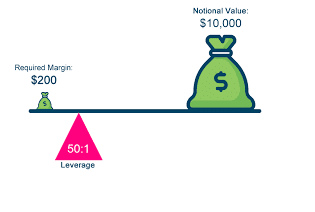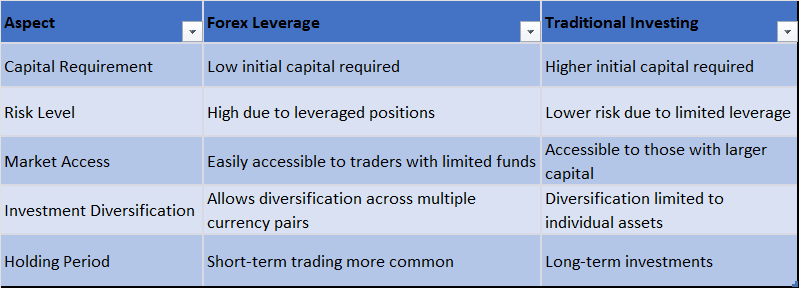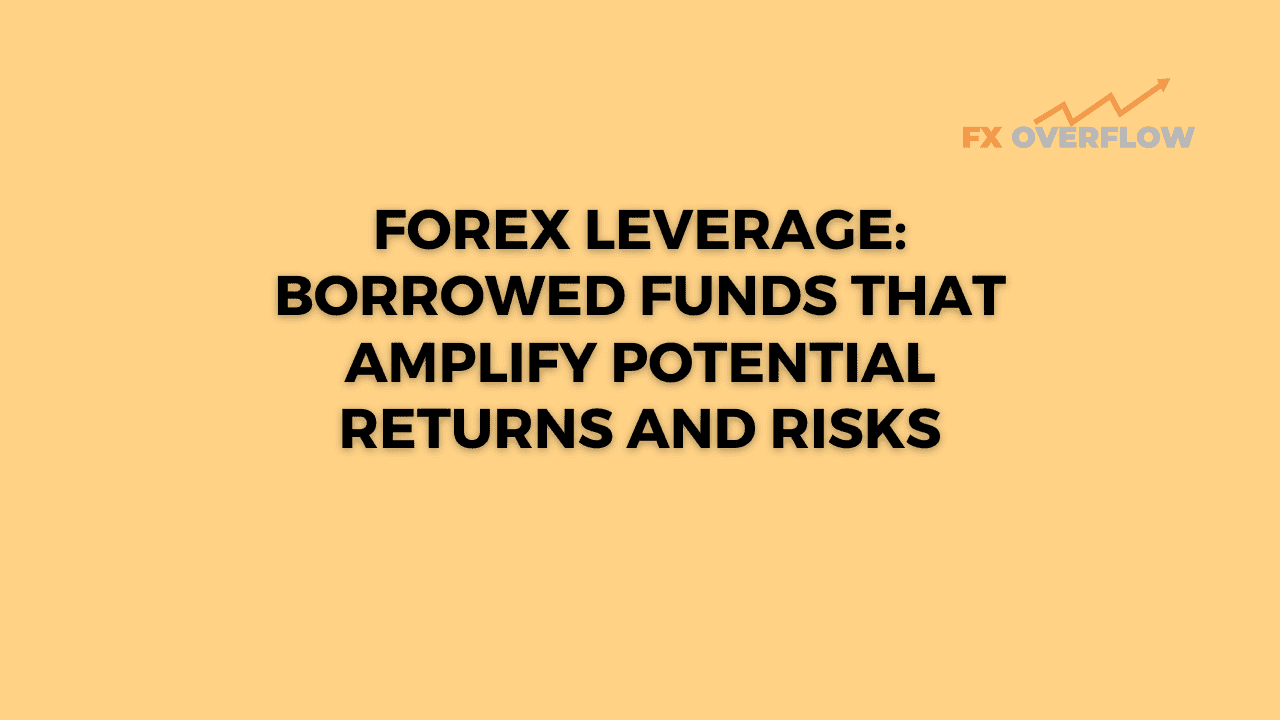Forex Leverage: Borrowed Funds That Amplify Potential Returns and Risks
In the world of forex trading, leverage plays a pivotal role. It is the financial tool that allows traders to magnify their potential returns and, at the same time, exposes them to increased risks. Understanding the concept of forex leverage is crucial for any trader looking to venture into the exciting world of foreign exchange. In this article, we will delve into the intricacies of forex leverage, examining its benefits and dangers, and provide you with a comprehensive guide on how to use it prudently.
Table Content
1. What is Forex Leverage?
2. How Leverage Works
3. The Pros and Cons of Forex Leverage
4. How to Use Forex Leverage Wisely
5. Comparison Table: Forex Leverage vs. Traditional Investing
6. Tips for Successful Forex Trading
7. Footnote
8. FAQs
What is Forex Leverage?
Forex leverage refers to the borrowed funds that brokers offer to traders, allowing them to control positions that are significantly larger than their own capital. It is represented as a ratio, such as 1:50, 1:100, or even higher. For example, with a 1:100 leverage, a trader can control a position worth $100,000 by putting up only $1,000 of their own money.

How Leverage Works
Leverage has the power to magnify both gains and losses. Let's illustrate this with an example:
Suppose Trader A has $5,000 in their trading account and decides to use a 1:50 leverage. With this leverage, they can control a position of $250,000 ($5,000 x 50). If the currency pair they are trading moves 1% in their favor, Trader A will gain $2,500 ($250,000 x 1%). However, if the market moves against them by 1%, they would also lose $2,500.
The Pros and Cons of Forex Leverage
A- Benefits of Forex Leverage
- Enhanced Profit Potential: The primary allure of leverage is the ability to amplify profits. With a smaller initial investment, traders can gain exposure to larger trade sizes, potentially leading to substantial gains.
- Increased Market Accessibility: Leverage opens doors for traders with limited capital, enabling them to participate in the forex market and capitalize on opportunities they couldn't otherwise afford.
- Portfolio Diversification: By using leverage strategically, traders can diversify their trading portfolio and explore various currency pairs simultaneously.
B- Dangers of Forex Leverage
- High Risk of Loss: While leverage enhances profit potential, it equally magnifies losses. A small unfavorable market movement can quickly deplete a trader's account.
- Margin Calls: When a trade goes against a highly leveraged position, the trader's equity may fall below the required margin level, leading to a margin call and potential liquidation of the position.
- Psychological Pressure: Trading with leverage can add significant psychological pressure, as traders may become more emotionally invested due to the higher stakes involved.
How to Use Forex Leverage Wisely
1. Understand Your Risk Tolerance
Before utilizing leverage, it's essential to assess your risk tolerance. Determine the maximum amount of capital you are willing to risk on a single trade. Remember, conservative use of leverage is key to long-term success.
2. Start Small
If you are new to forex trading or leverage, start with smaller leverage ratios. This approach allows you to gain experience and confidence while minimizing potential losses.
3. Use Stop-Loss Orders
Implementing stop-loss orders is a prudent risk management technique. These orders automatically close your trade if the market moves against you, limiting your potential losses.
4. Stay Informed and Educated
Stay updated with market news and economic events that could impact currency prices. Being well-informed enables you to make informed decisions and respond appropriately to market movements.
5. Avoid Overtrading
Resist the temptation to overtrade by opening multiple positions simultaneously. Instead, focus on quality trades with a higher probability of success.
Comparison Table: Forex Leverage vs. Traditional Investing

Tips for Successful Forex Trading
- Stay Disciplined: Stick to your trading plan and avoid making impulsive decisions based on emotions.
- Keep Emotions in Check: Emotional trading can lead to poor judgment and decision-making. Maintain a rational mindset when trading.
- Practice Risk Management: Use stop-loss orders and position sizing to manage your risk effectively.
- Keep Learning: The forex market is dynamic and ever-changing. Continuously educate yourself to adapt to market conditions.
Footnote
Forex leverage offers an incredible opportunity for traders to maximize their potential returns. However, it is essential to approach leverage with caution and responsibility. Always remember that while leverage can amplify gains, it can also lead to substantial losses. As a trader, understanding and managing leverage is critical for long-term success in the forex market.
FAQs
Q: What is the ideal leverage ratio for forex trading?
- There is no one-size-fits-all answer to this question. The ideal leverage ratio varies based on your risk tolerance and trading strategy. Generally, conservative traders opt for lower leverage (1:10 to 1:20), while more experienced and risk-tolerant traders may use higher leverage (1:50 or more).
Q: Can leverage be used in any financial market?
- Leverage is commonly used in various financial markets, including forex, stocks, commodities, and futures trading. However, the specific leverage offerings may vary from one market to another.
Q: What are the risks associated with high leverage?
- High leverage increases the risk of significant losses. If the market moves against your position, your losses can surpass your initial investment, potentially leading to a margin call and forced liquidation of your trades.
Q: How can I minimize the risks of trading with leverage?
- To minimize risks, always practice proper risk management techniques. Use stop-loss orders, avoid overleveraging, and trade with a capital amount you can afford to lose.
Q: Is leverage suitable for beginners in forex trading?
- For beginners, it is advisable to start with lower leverage and gradually increase it as they gain more experience and confidence in their trading abilities. Rushing into high leverage without sufficient knowledge can be risky for inexperienced traders.











Discussion